IGLU' Green Roofs
SYSTEMS FOR ROOF GARDENS
IGLU' Green Roof is a system of great environmental significance against the continued overbuilding of our cities.
Introducing the ability to create roof gardens and green roofs to protect the waterproofing and with a guaranteed life of the garden.
The main challenge for green roofs was to adjust the water drainage, to prevent the death of the vegetation due to excessive stagnation or lack of water. Today it is possible to adjust the drainage of the roof gardens thanks to Iglu’ green roof, whose surface area allows for adequate water storage and, at the same time, for the drainage of excess water through the “overflow” holes.
Creating a roof garden the with Iglu’® green roof system can satisfy the public administrations requirements in terms of building parameters, energy saving, and reducing and mitigating the release of water into the sewer system.
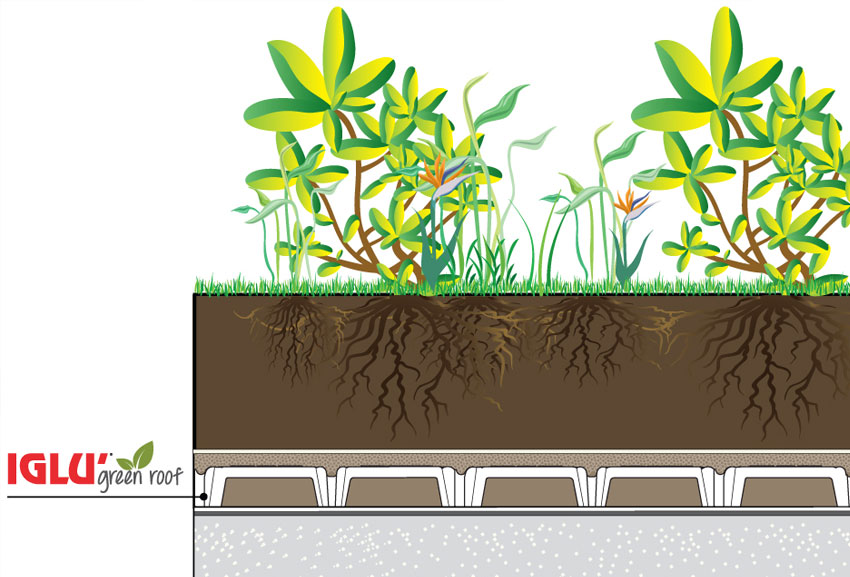
• Retain & store high capacity of water: up to 90%,
• Green roofs humidify the air and contribute to decrease global warming,
• Improvement of air quality: atmospheric dust is retained and harmful substances are filtered and purified by the vegetation,
• Increased thermal insulation,
• Adds sound insulation,
• Increased durability of the cover: the waterproof coatings remain protected from temperature changes, UV rays and hail,
• Increased property value,
• Unused space, become alive and can be used,
• Mitigation of environmental impact: nature is integrated into the buildings, helping to requalify and ennoble the urban
settings, reducing their visual impact.
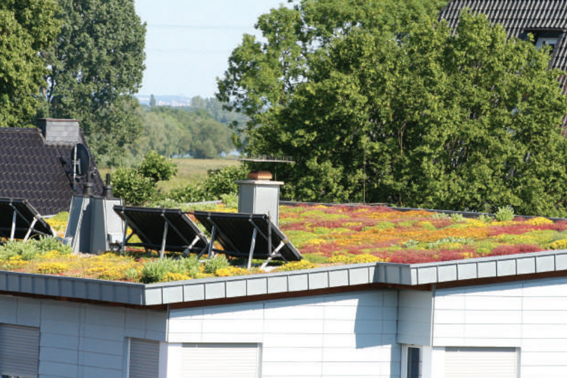
With tank - Extensive Rooftop Gardens:
Suitable for the roofs of industrial buildings, shopping centres, office blocks and garage roofs. Low maintenance and no need of special irrigation systems.
Is a type of green cover for medium-large surfaces, with reduced load capacity, which does not require special implementation and maintenance costs, given the limited thickness of the substrate and the type of vegetation belonging to very durable species with shallow roots (grass, sedum, herbaceous perennials).
It can be applied on flat or sloped coverings (up to 30°).
Key points:
- Thinner material strata;
- Use of self-propagating & self-healing low stem plants
or grass.
- Use on flat and sloped roofs – up to 30°
- Low maintenance and no need of special irrigation systems.
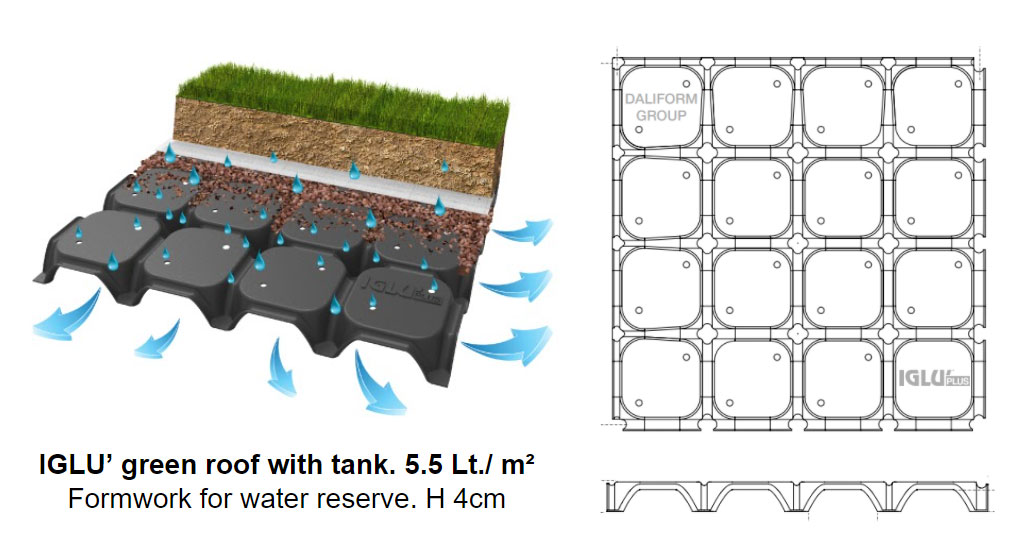
The crown allows water to drain only in case of an overflow.
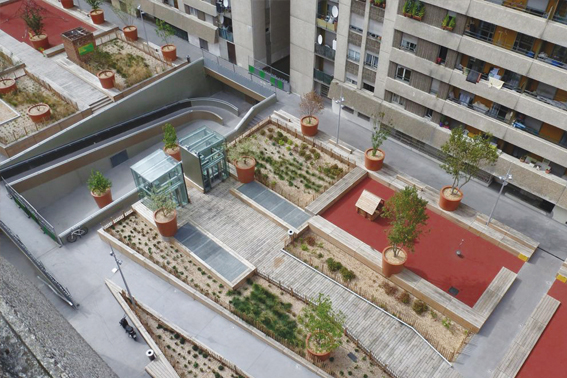
Dispersion - Intensive rooftop gardens:
Coverings of this type are particularly suitable for private homes and hospitals, elderly homes, tourist facilities, covers for underground garages, driveways and parking areas, where high loads and mechanical stress are expected. High maintenance and frequent maintenance.
Is the most representative solution of the traditional garden. This solution allows the choice between a huge number of different species, which also include shrubs and trees of the third magnitude and requires a high degree of maintenance.
The ability to recreate environments which are fully comparable to the traditional gardens on the ground, make this type of covering a fully usable structure.
Key points:
- High maintenance and need of irrigation system.
- Stratigraphies with thicknesses up to over 60 cm;
- Heavy loads on the roof;
- Use of bushy plants, medium height shrubs,
& small trees similar to those planted in the soil.
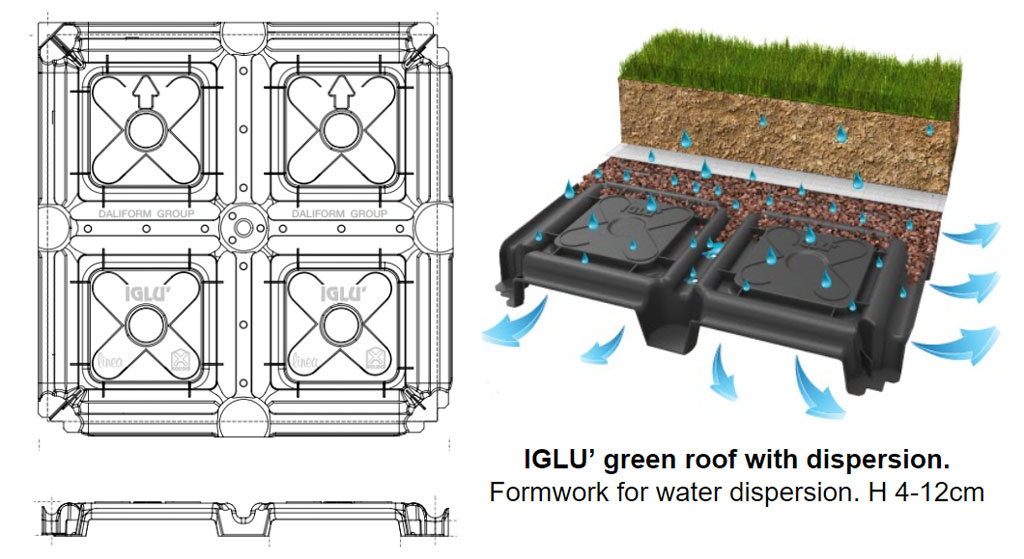
Lower side allows water to drain in order to ensure the maximum dispersion in the shortest possible time.